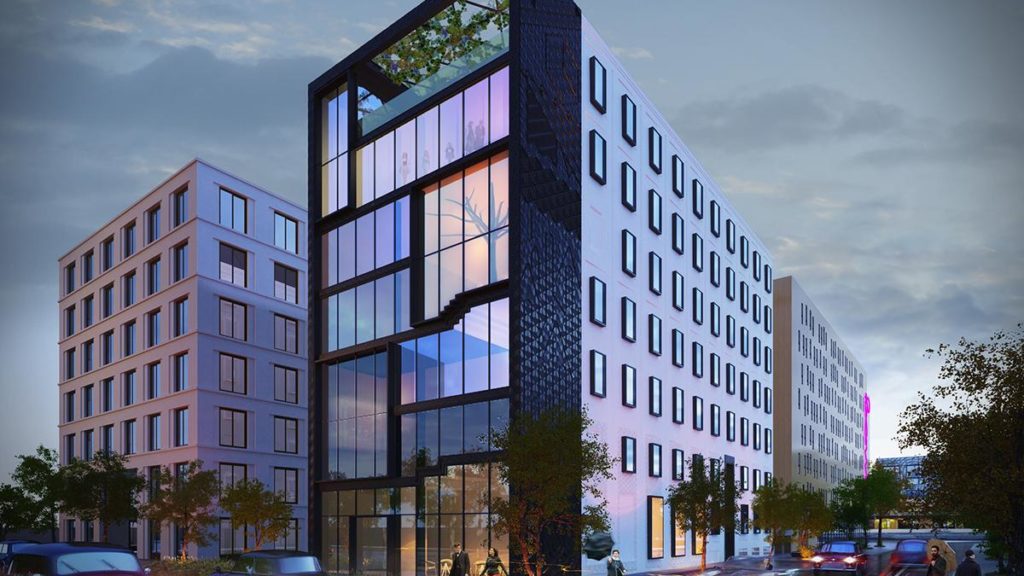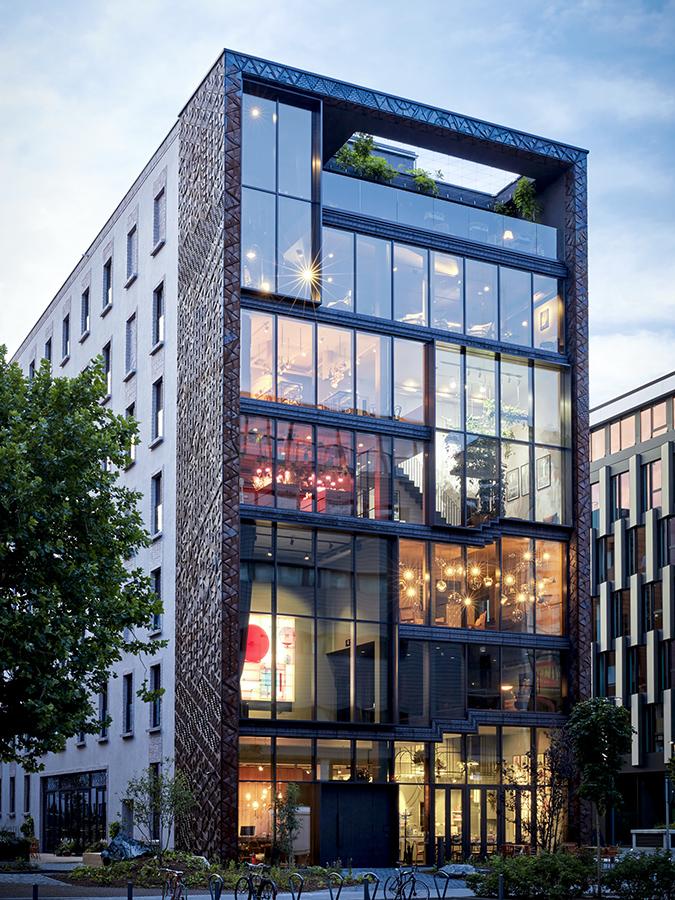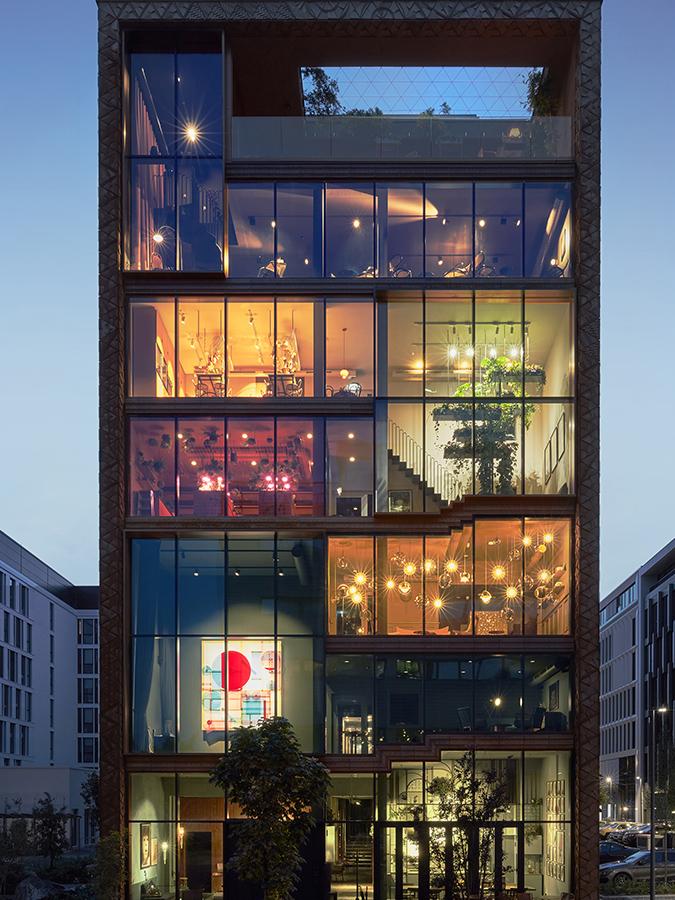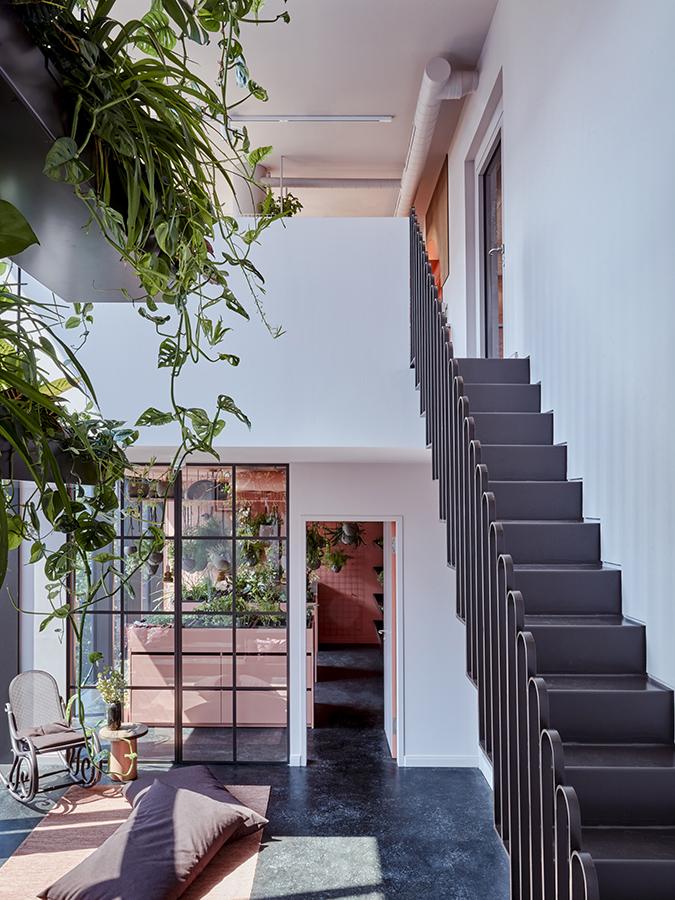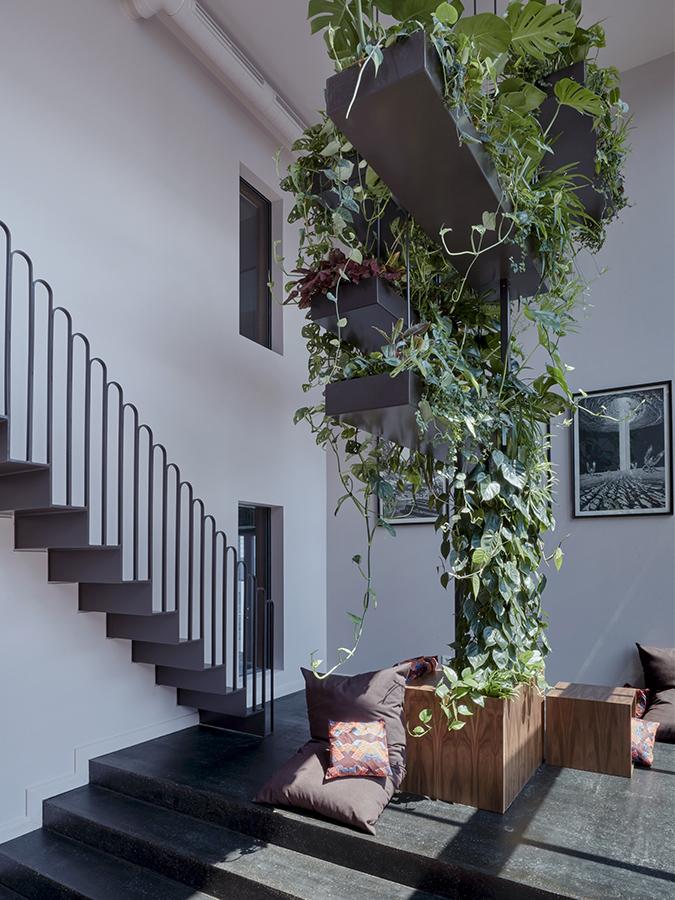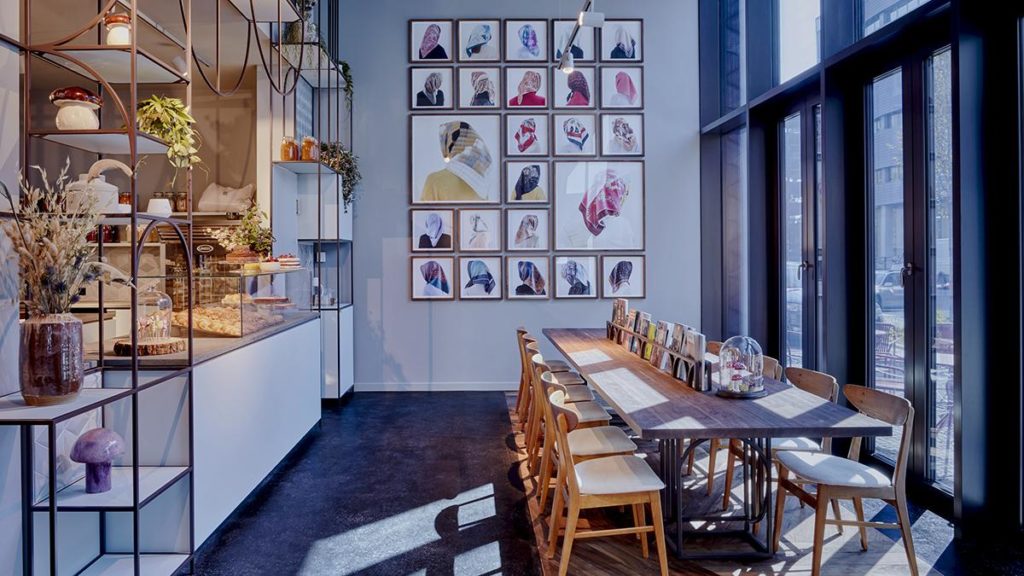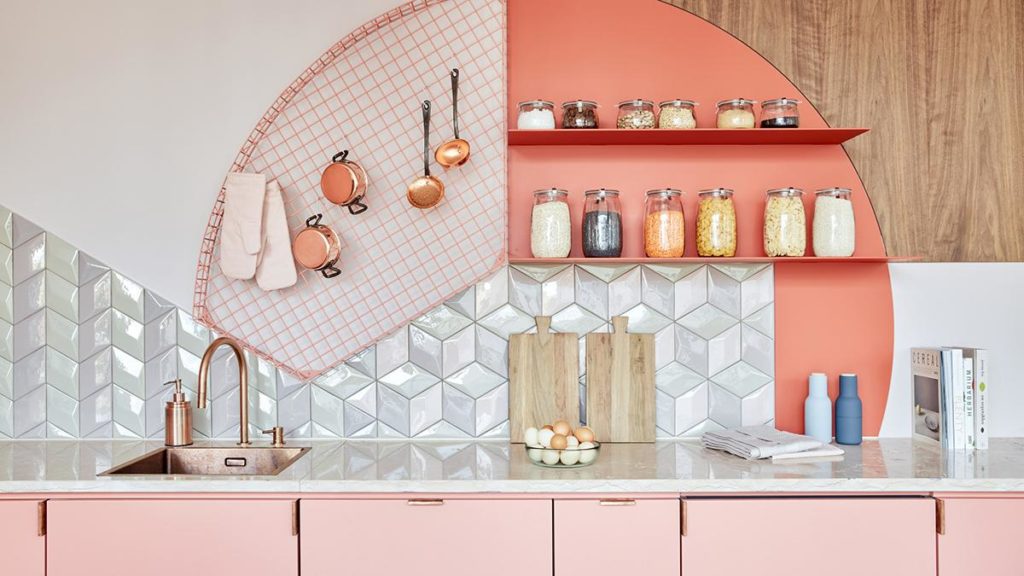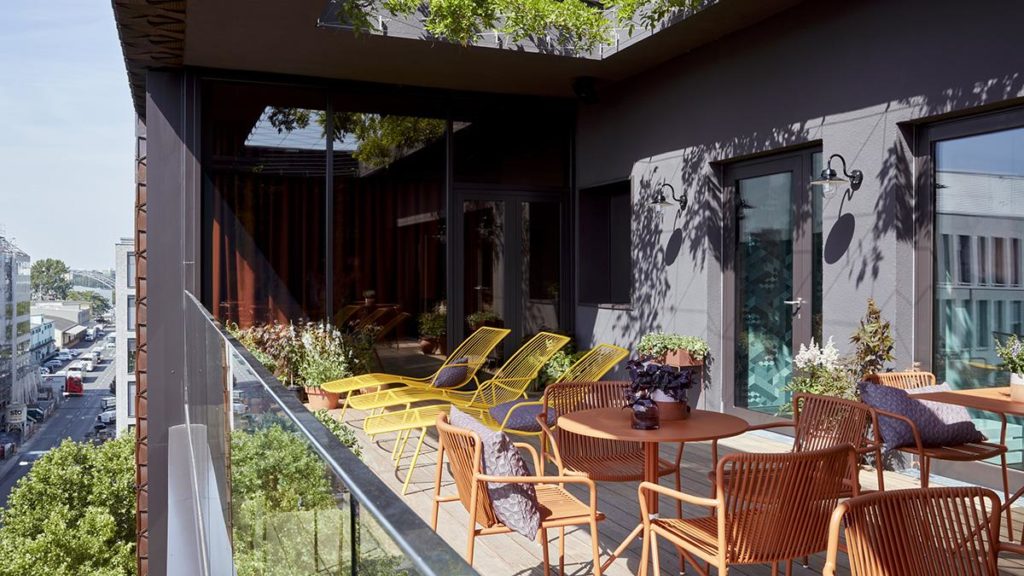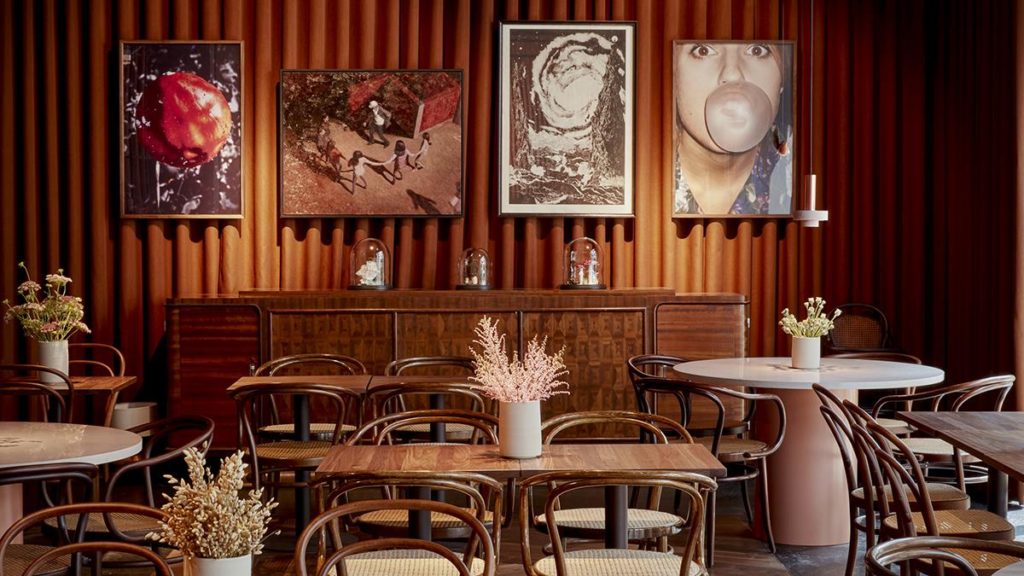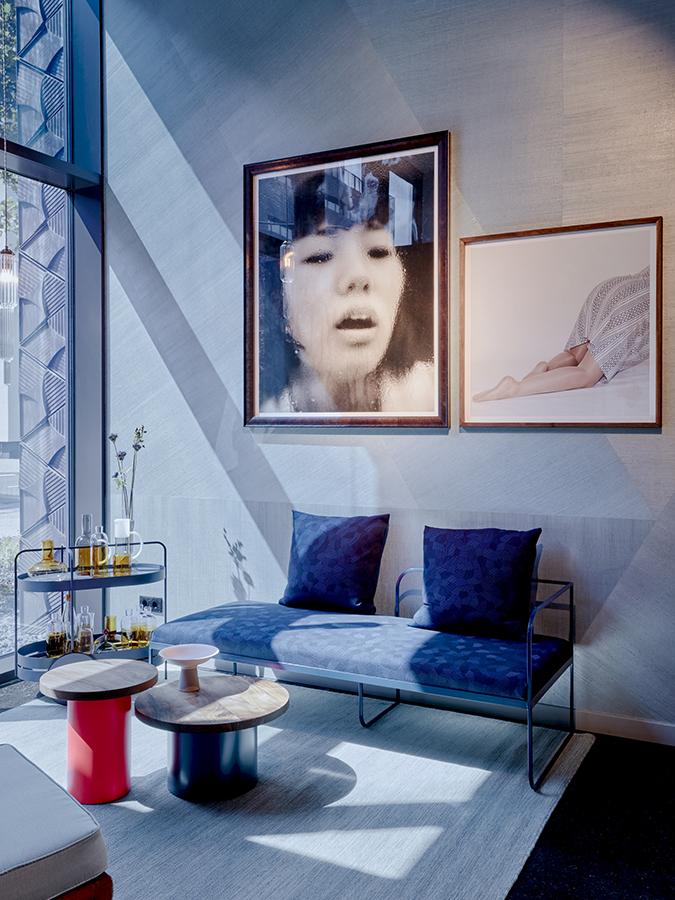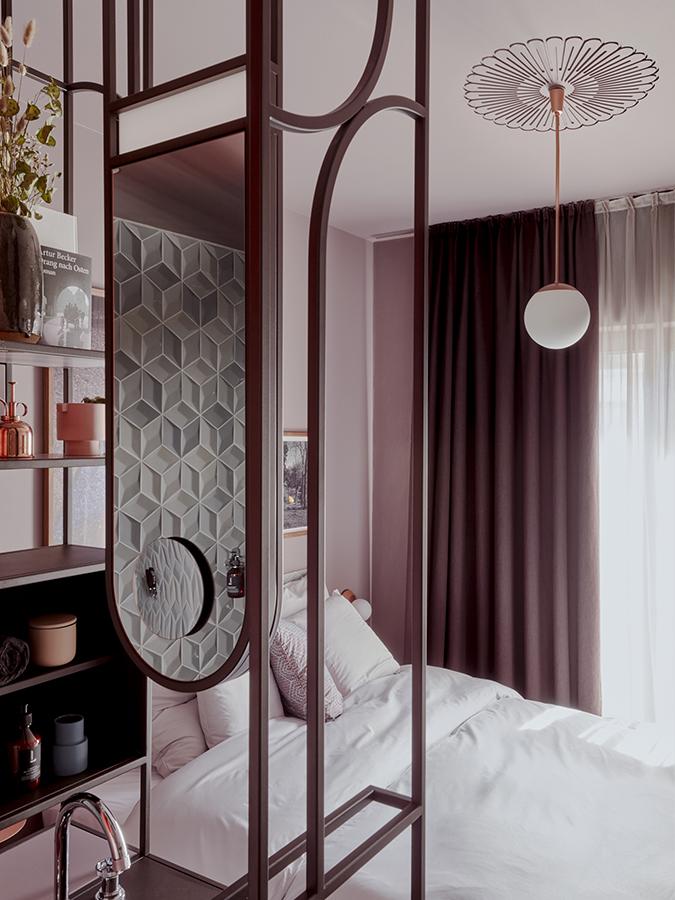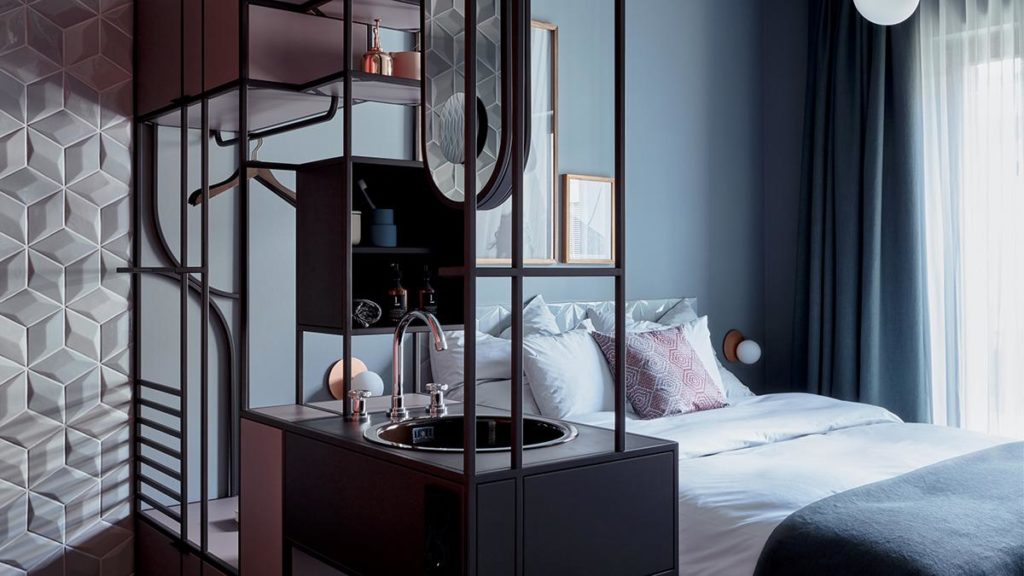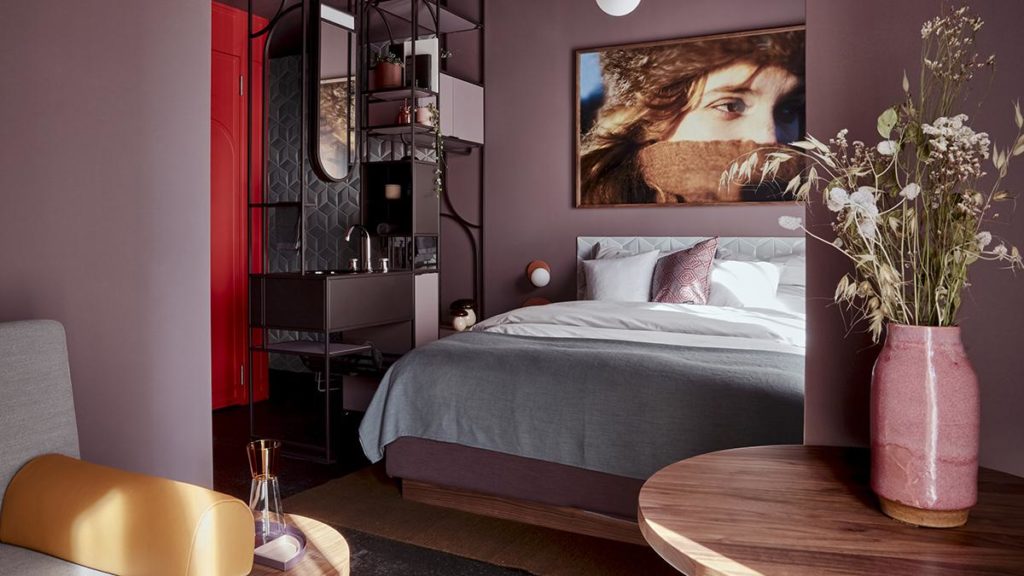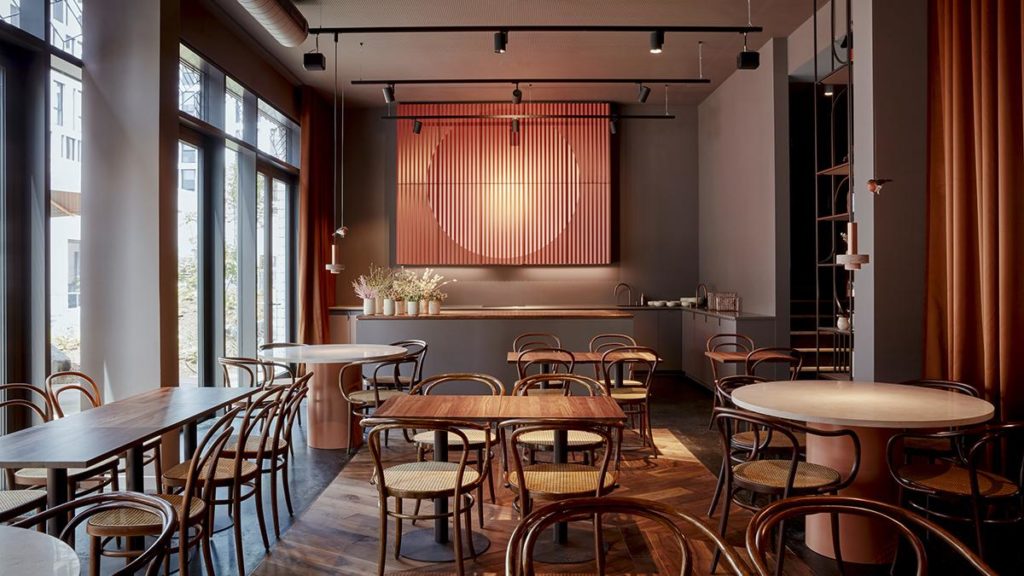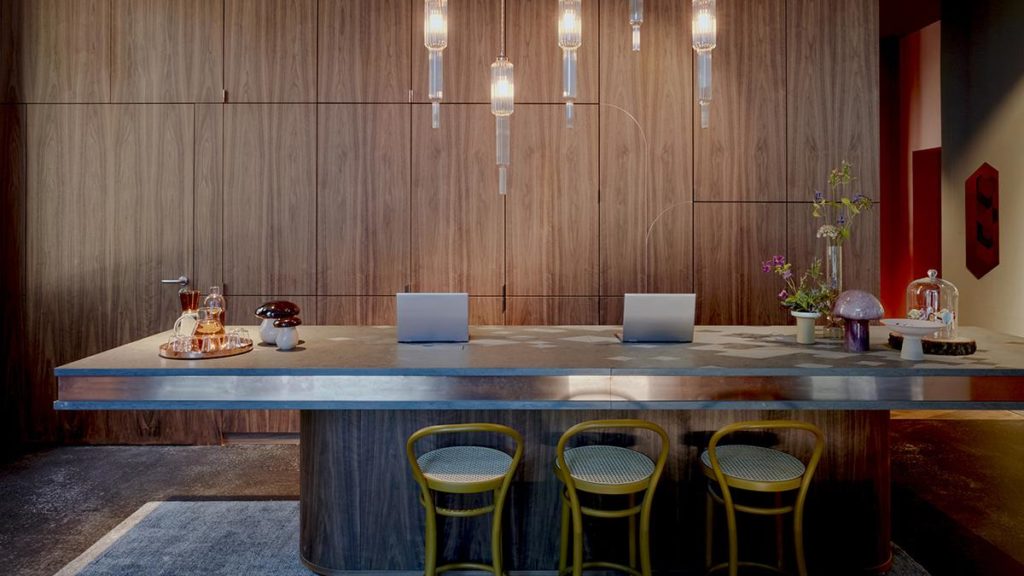Lindenberg – a new kind of hotel
The renowned architectural firm Franken Architekten has created an extraordinary hotel project in Frankfurt. At the Lindley Lindenberg, permanent residents and travellers share common, cleverly designed spaces. For those who prefer to shun anonymity and enjoy communicating with others, this is an entirely new hotel concept: a community feeling for sophisticated sojourners.
It’s “not a hotel”, it’s a “guest community.” That’s how the owners describe the Lindenberg, which is their third establishment. And there is much more that makes the recently opened Lindley Lindenberg in Frankfurt so special. Franken Architekten, Exitecture (construction management) and Studio ABERJA (interior) joined forces to create the design. It’s an exciting project in every respect.
A transparent “Wunderkiste”
A glance at the exterior is all it takes to realize that the Lindley Lindenberg is decidedly different. The multiple award-winning architectural firm Franken Architekten has designed an inviting, highly creative eye-catcher. Looking through the glazed façade, passers-by can see the multicoloured shared living spaces on seven floors. In contrast to the private rooms, these spaces are shared by both guests and permanent residents alike.
The block-shaped structure is divided into a residential wing, featuring a façade dotted with regular rows of windows, and the “Wunderkiste”, which contains shared living spaces, some of which extend over two storeys.
The “Wunderkiste” is separated from the residential wing by a solid cast iron curtain wall on both sides of the building. Its sweeping glass façade to the South faces the basin of the East Port.
A hotel with a sense of community
The split levels in some of the rooms are linked by steps, and the vertical layering effect is emphasized by the ceilings. The architecture forms the basis for the new, innovative hotel concept that is embodied by the Lindley Lindenberg. These collectively used spaces transform the building into a luxurious residential community that fosters communication.
The choice of materials serves as a clear reference to the commercial buildings that once dominated the eastern part of Frankfurt. Cast iron, plaster and clinker brick – along with the classic division of the residential wing into a base course, mid-section and roof cornice – are reminiscent of Wilhelminian industrial architecture.
Cast iron, wood and greenery
More than 2,000 cast iron elements – weighing the equivalent of a herd of 70 elephants – adorn the outer surface of the “Wunderkiste”. The base course is accentuated by floor-level windows that provide a connection to the garden. Decorative panels and floor-level, elegantly simple wooden windows characterize the mid-section. The roof is edged with a cornice.
A harmonious colour concept
Each community area reflects various nuances of the overall colour concept. For instance, whilst the bakery and the reception area on the ground floor are decorated in winter-blue tones, the first floor is awash in a sea of dark greyish blue. The “parlour” is radiant with a variety of yellow shades ranging from curry to lemon. The “herb room” and “tree room” are tinted in salmon pink, and the bar area is painted a purplish brown.
Of course, the Lindenberg Group just wouldn’t be the same if it didn’t also provide a new interpretation of the meaning of “colour”: through its own music label LOTTE LINDENBERG, the firm released the album “ELLIE FORD – Light. Repeated.” to coincide with the opening of its third hotel. This special Lindley sound is intended to convey the tonal quality of the project and can be heard at various places throughout the hotel.
Mix of styles à la Lindenberg
The interior of the Lindley Lindenberg has precise lines, arches and patterns that evoke earlier stylistic periods. The design embraces the contrast between old and new elements.
A distinctive collection of Thonet chairs, e15 tables, vintage lamps by Frank Landau, shelves by Muller Van Severen, box-spring beds by Fennobed and furniture and lamps custom designed by studio ABERJA make for a chic mix of styles.
Another unique feature of the hotel: custom-crafted partitions made of gently undulating steel panels. Based on a design grid, they define different spaces within rooms and common areas. ABERJA’s choice of materials ensures a fine, unobtrusive overall appearance.
Harmony through a diversity of materials
Dark, coarse poured asphalt encounters warm walnut wood, for instance, when parquet flooring has been used. In addition to fine examples of Viennese weave, the walls are decorated with custom-designed, diamond-shaped tiles made by Kaufmann Ceramics. And copper elements can be found not only in the restaurant kitchen, but throughout the entire building.
Natural materials like shell limestone blend harmoniously with the interior design. Heavy curtains and armchair upholstery from Kinnasand add a touch of warmth and comfort. Textiles made exclusively for the Lindley Lindenberg are fashioned as upholstery, slippers and other details to contrast with the muted interior colour scheme.
In keeping with the philosophy of the Lindenberg Group, many of these fabrics are made in Sierra Leone by women who used to perform the cruel practice of female genital mutilation, but were convinced to train as seamstresses. Projects like these are supported by a non-profit organization called Pfefferminzgreen.
Conserving resources is a top priority
As with the other two Lindenberg hotels, the Lindley is run as a conscious business. The focus is on vegetarian cuisine, largely made with locally grown products that the company cultivates in the Taunus region.
The Lindley even has its own indoor farm for growing herbs. Resource conservation is a top priority because Lindley hopes to bring together “people who love the world as much as we do.”
Hotel guests can slip away and retire to one of the 100 attractive rooms or enjoy the common areas to their heart’s content – regardless of whether they want to stay just one night, several weeks, months or even years.
Restaurants and communal kitchens
There are plenty of opportunities to relax at the hotel, but also to engage in professional activities. Restaurants and communal kitchens, a lounge for reading and listening to music, cultural activities, co-working space, pub, gym, garden and roof terrace are just a few of the possibilities.
According to the hotel operator, nobody has a problem with guests taking advantage of all these offers “in sweatpants and slippers.” According to General Manager Denise Omurca: “We are neither a conventional hotel nor a flat-sharing community, but we have aspects of both.” Since as early as 2012, Lindenberg has seen itself as a pioneer in what is known as “collaborative living”. The basic philosophy here is that having access to things is more important than possessing them. This reflects the social need for communal living and working.
Quality living with a sense of community
The idea is to offer quality living with a sense of community, yet also with the freedom to pursue one’s own individuality. Guests and residents appear to appreciate this. And one thing is certain: the architecture and concept of the Lindley Lindenberg is quite remarkable – regardless of whether the establishment is billed as a hotel or as a “flat-sharing community with special qualities”.
Text: Elisabeth Schneyder
Translation: Rosemary Bridger-Lippe
Images: Steve Herud, Franken Architekten
